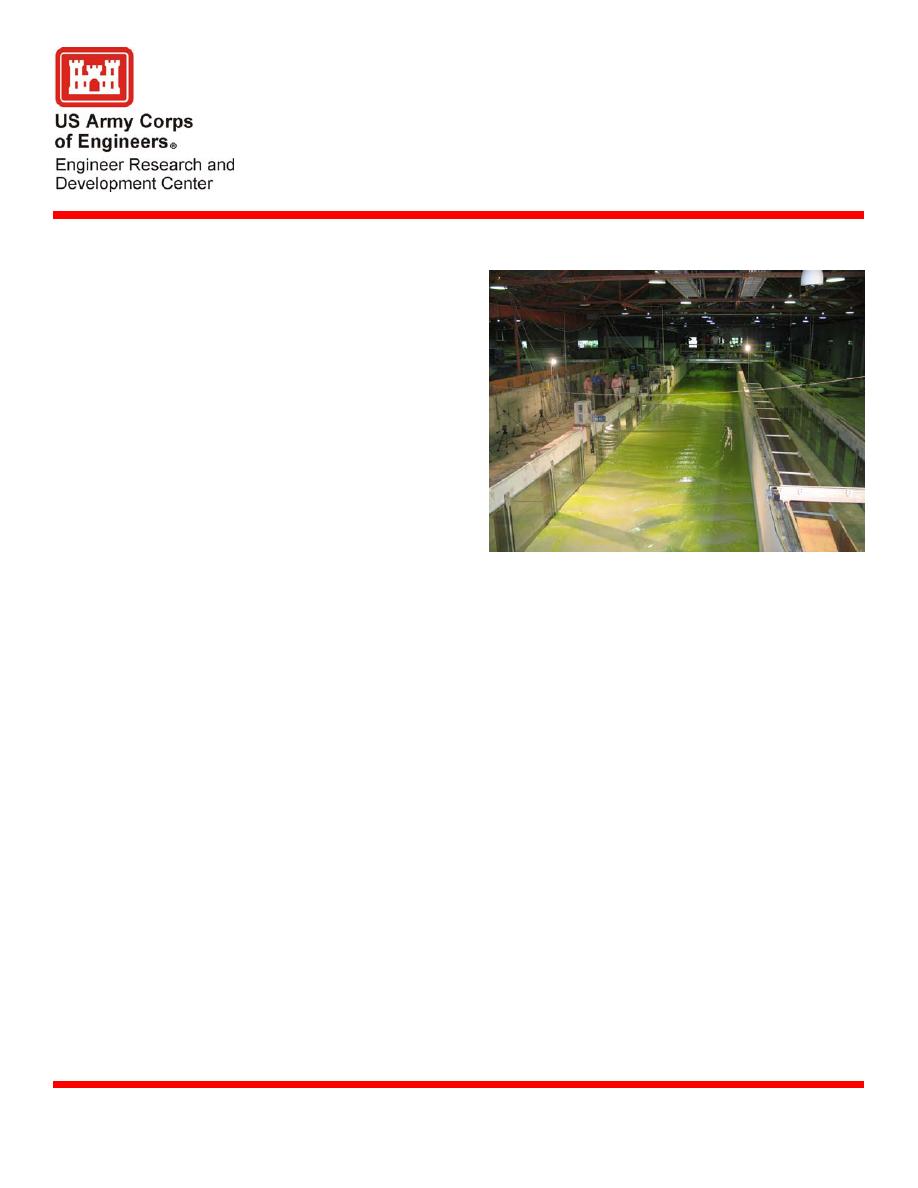
10-ft and 5-ft Wave Flume Facility
Description
The Engineer Research and Development Center, Coastal and Hydraulics Laboratory,
maintains and operates extensive laboratory facilities used for designing and testing coastal
structures. Large two-
dimensional wave flumes are
used to test designs for rubble-
mound trunk armor stability
and to quantify wave runup,
overtopping, and transmission.
10-ft
5-ft
In addition, these wave flumes
flume
flume
are used to explore the physics
5-ft
flume
of water wave propagation,
wave transformation and wave-
structure interaction. These
flumes are also used for
experimental investigation of
sediment transport in wave and
steady current environments.
Specifications
Two glass-walled wave flumes
10-ft and 5-ft flumes located in building 3281
are used to support research and
site-specific studies. The flumes are both 63 m (208 ft) long and 1.5 m (5 ft) deep. One
flume is 1.5 m (5 ft) wide while the other is 3 m (10 ft) wide. Both two-dimensional glass-
walled flumes are equipped with computer-controlled electro-hydraulic wave generators.
The wave generators are capable of creating irregular waves with a maximum wave height
of 0.46 m (1.5 ft), and wave periods of 0.75-10.0 secs. A steady flow system is also an
integral part of the flumes. The facility includes an automated data acquisition and control
system, extensive fluid measurement instruments and a laser profiling system.
Measuring breakwater and revetment armor stability, forces on coastal structures,
Benefits
overtopping rates for different structural configurations during storm conditions, and
sediment transport in the surf zone would be very difficult and expensive outside a
controlled laboratory environment. Structure cross section can be easily optimized in a
scale model test. An important tangible benefit of verifying designs in the laboratory is
reduction of future maintenance and repair costs over the structure life as well as reduced
risk of failure.
Application
Recent supported studies include generalized breakwater deterioration R&D study, Lajes,
Azores breakwater stability study, generalized unexploded ordinance mobility R&D study,
Kaumalapau breakwater stability study, Kodiak, Alaska, breakwater stability study,
reflected wave absorption R&D study, combined wave and current interaction R&D study,
and sand dune breaching R&D study.
Point of Contact
Dr. Jeffrey A. Melby, U.S. Army Engineer Research and Development Center,
ATTN: CEERD-HN-H, 3909 Halls Ferry Road, Vicksburg, MS 39180-6199;
email: . Additional information can be
U.S. Army Engineer Research and Development Center
June 2005
Coastal and Hydraulics Laboratory (Facility)
www.erdc.usace.army.mil



 Previous Page
Previous Page
